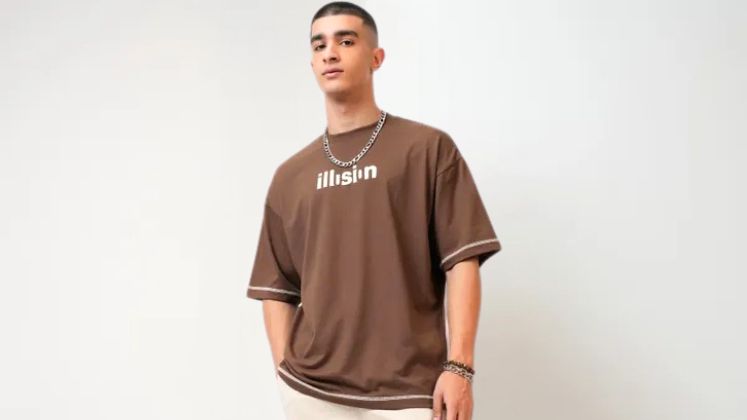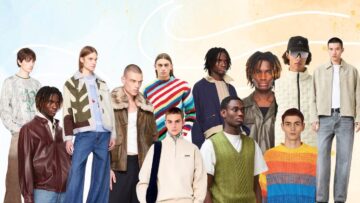The fast fashion market in India is on fire! Currently valued at US $ 10 billion, it’s projected to hit US $ 50 billion by FY ’31. Driven by Millennials and Gen Z, the industry saw an impressive 30 per cent – 40 per cent growth in 2024, while the broader fashion market grew by just 6 per cent.
Even global giants are taking notice – SHEIN’s much-anticipated comeback in collaboration with Reliance Retail is proof of India’s booming potential.
It’s no surprise that domestic brands like Brand Studio Lifestyle are riding the cocktail of fast fashion to capitalise on this explosive growth.
The bootstrapped company which operates five brands – Highlander, Tokyo Talkies, Vishudh, Ketch and Locomotive—has now expanded offline with Highlander and Tokyo Talkies.
“Brand Studio Lifestyle was a coalescing of strengths, passion and vision of six entrepreneurs—Sanjay Dalmia, Shyam Prasad, Raghu Hegde, Mansi Kshatriya, Sathish Kumar and Manoj Patil—with expertise across various aspects of the fashion supply chain,” stated Sathish Kumar, Chief Creative and Digital Communications Officer and Head of D2C at Brand Studio Lifestyle Pvt. Ltd.
He added, “D2C brands, fashion marketplaces and value fast fashion offline retailers all target the same consumer segment as we do. Our differentiator lies in our ability to combine fashion, quality, option variety and affordable pricing.”
In an exclusive interview with Apparel Resources, Sathish shared more about the company’s strategy and plans for growth. Here are the edited excerpts.
AR: How are modern consumers forcing retailers to rethink their strategies?
Sathish: Today’s consumers are the trendsetters and understanding their behaviour is key for retailers to stay competitive.
For instance, Gen Z, born between 1997 and 2012, are driving trends around sustainability, diversity and inclusivity. They are highly conscious consumers, with 75 per cent considering the environmental impact of their purchases. Their influence can be seen in the rise of athleisure, streetwear and bold, expressive styles. Digital natives by nature, they prefer shopping online, discovering brands on social media and engaging with influencer marketing. Brands like Supreme and Off-White exemplify how Gen Z’s values have disrupted traditional retail through sustainability and inclusivity paired with strong online engagement.
Looking ahead, Gen Z will likely be the key group driving the future of retail.
Whereas early Millennials, born between 1981 and 1996, prioritise quality, timeless fashion and luxury. They value high-end materials, craftsmanship and minimalist, investment-worthy pieces. Shopping behaviour of this group leans towards personalised service and immersive in-store experiences, making physical retail highly relevant. Brands such as Everlane and J.Crew have thrived by delivering high-quality products paired with exceptional customer experiences tailored to this audience’s expectations.
Meanwhile, Gen Alpha, the youngest cohort born after 2013, is already influencing kids’ fashion trends. The focus here is on comfort, creativity and self-expression, with vibrant, playful designs and inclusive sizing gaining traction. Shopping for Gen Alpha is driven by their Millennial and Gen Z parents, who prioritise online convenience, sustainability and affordability. Brands like Patagonia and Old Navy have effectively targeted this group with eco-conscious, kid-friendly offerings that resonate with their parents’ values.
I believe it’s essential for brands to build strong omnichannel capabilities that seamlessly connect the offline and online worlds. Today’s consumers want more than just a purchase—they crave for immersive experiences, whether they’re walking into a store, scrolling online or engaging on social media. That’s why interactive retail designs are taking centre stage and the online space is catching up with tools like AR, VR, virtual try-ons and other AI-driven innovations. The future is all about blending technology with creativity to keep consumers engaged and excited!
AR: You’ve got five brands under your belt – each unique, but which one is the revenue champion and which are the products that make customers hit ‘add to cart’ every time?
Sathish: Highlander is our star performer. It leads the pack, contributing around 40 per cent of our sales. The brand has been around for a while and made its mark early on in the online space as one of the first men’s fast fashion brands in India. Additionally, our long-standing association with Rohit Sharma, the Indian cricket captain, helped cement its place as a trusted name in fashion.
Our target customers at Highlanders are mainly Gen Z and young people who are very active on social media. These customers are always posting content about themselves like selfies and they love showcasing their fashion sense to their friends.
We offer a wide range of products like shirts, jeans, T-shirts, sweatshirts, cargo pants, casual trousers, partywear shirts, oversized shirts and winter jackets. The fabric we use depends on the trend. For example, we have cotton shirts for casualwear, fluid viscose shirts for oversized styles, satin printed shirts for partywear, heavyweight cotton for performance cargo pants and stretch fabric for our Chino trousers.
Next up, Tokyo Talkies has quickly become a favourite when it comes to fashion-forward, affordable women’s westernwear. It’s a go-to brand for those looking for trendy styles and contributes about 30 per cent of our revenue. Then, there’s Vishudh, which brings in about 20 per cent, offering elegant and trendy ethnic fashion for women, with a wide range of traditional and Indo-western styles.
The rest—Locomotive, Ketch and Hoop—make up the balance. Locomotive targets the premium men’s fashion market, Ketch appeals to the youth with a mix of casual, western and ethnic collections for both men and women and Hopp focuses on kidswear.
When it comes to our best-selling products, cargo and oversized T-shirts, casual shirts, jeans and winterwear top the list, consistently getting added to customers’ carts. Interestingly, about 60 per cent of our sales come from Tier-2 and Tier-3 cities. The youth in these regions are eager for trendy, affordable fashion and our digital-first approach allows us to connect with them effortlessly, making us truly geography-agnostic.
AR: Is your unique manufacturing franchise model the game-changer that the apparel industry has been waiting for?
Sathish: Our manufacturing franchise model is truly unique. It taps into the entrepreneurial potential of experienced technocrats in the apparel industry like production and factory managers.
These individuals bring a wealth of experience to the ecosystem ranging from manpower sourcing, training, factory line operations to efficiency building and quality management. However the career path post this position is limited and most professionals tend to move laterally. At Brand Studio, we open this programme for such individuals with guidance on setting up manufacturing facility, product training and then ensuring that the capacity set up is fed by orders from Brand Studio brands throughout the year, thereby allowing them to assume entrepreneurial roles, increase their income and at the same time de-risk their entrepreneurial journey by ensuring a confirmed flow of orders.
Right now, we have around 10 to 12 partners in our manufacturing entrepreneurship programme.
Many of these partners we’ve worked with for a long time through factories we’ve collaborated with before. Some of them have come to us expressing interest in setting up their own manufacturing units, and in a few cases, the second generation in these families have taken over the business.
Garment manufacturing doesn’t require a huge investment, especially with government support. All you really need are sewing machines, which cost between Rs.15,000 to Rs.20,000 each. If someone wants to set up a factory with 100 machines, they would need around Rs.25 to Rs.30 lakh to get started.
As for our overall sourcing strategy, it’s built on a virtually integrated approach, ensuring a smooth journey from concept to consumer.
We source from over 250+ fabric manufacturers across India and get contract manufacturing done from 200 medium and small manufacturers across the country.
Vendor performance is a critical factor in both onboarding and continued collaboration and we track several key metrics when bringing a new vendor on board. These include manufacturing capacity, manpower availability, product capability, business cost structure (cost per minute), operational efficiency and adherence to quality processes and standards.
Based on these metrics, we assign specific product categories and volumes to these manufacturers and then review their performance against the standardised metrics. We also have a highly trained quality assurance team that works with manufacturers constantly to monitor, train and improve quality levels. Our Industrial Engineers work with the manufacturers to help increase manufacturing efficiency and reduce product handling time.
AR: What’s your hack for making sure customers always find what they love effortlessly?
Sathish: We are a virtually integrated enterprise and have end-to-end visibility in the supply chain through the use of data. This ensures that the inventory levels are aligned to market demands and new trends can be delivered at speed.
There is no single technology stack that currently supports this end-to-end functionality encompassing dynamic forecasting, design intelligence, sales analytics and inventory performance. Therefore, we work with multiple tech tools provided by external parties. We use external and internal proprietary tech to identify trends and perform frequency analysis of product attributes within predefined cohorts to identify trending attributes that are to be launched or scaled and identify product attributes which are downtrending.
We are working with an ML start-up that can enable predictive analytics to ensure that loss of sale and overstocking is minimised while at the same time allowing for a healthy flow of new styles and stocks. An integrated end-to-end custom built ERP serves the entire gamut of supply chain activities from Product Lifecycle Management to Merchandise Lifecycle Management.
We have also implemented fraud detection technology to identify potential fraudulent customers and alert the business before the order is shipped, thus saving costs for the organisation and at the same time ensuring that honest and genuine customers are not impacted by any blanket policies which could have a negative shopping experience. The system also identifies users who are likely to cancel orders or return products based on their behaviour across various e-commerce platforms and allows businesses to proactively decide how to engage with such customers.
We’re working with a tech company called Unbox to use AI for personalised product recommendations on our website, Getketch.com. The AI improves over time, so we are feeding it lots of data to make the recommendations more accurate.
In addition, we’re planning to add more video content to our website.









